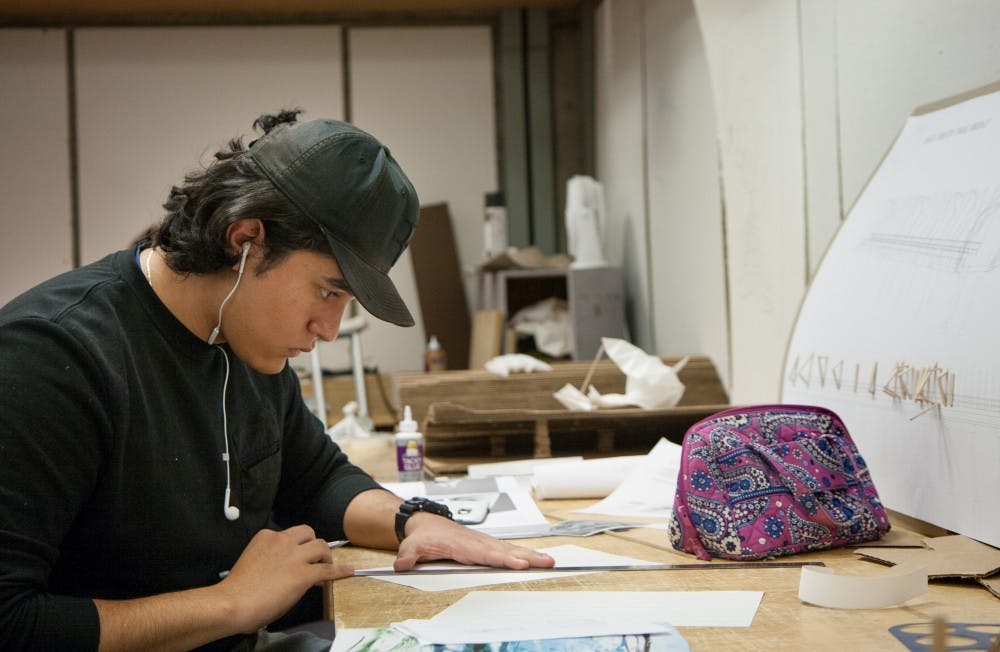One student grabs hot tea from a microwave while another enjoys lunch from a mini fridge, and another pulls out a blanket and pillow for a brief nap before getting back to work. No, this isn’t at a dorm room, rather the College of Architecture and Planning (CAP) building, which is “home” to many students as they spend the majority of their days and nights here.
Just as students personalize their rooms, CAP students make their individual work spaces comfortable with home appliances, sleeping items and pictures.
Ali Hartweck, a senior architecture major, compares most students’ workspaces to a “full mini apartment.” Hartweck said she has personalized her workspace with a fan, a photo board and a cooler under her desk where she keeps food in preparation for long nights of work.
The longest Hartweck said she has stayed at the CAP building was more than 36 consecutive hours, where she completed assignments and did her best not to fall asleep. She also said that she has gone several days without sleep to complete projects.
“You never see all the lights off,” Hartweck said. “Someone is always working, no matter what time, and overnighters are constant.”
While Evan Rogers, freshman in the CAP program, keeps his current project, various measuring utensils, his favorite pair of headphones and a sweatshirt at his desk, he wants to keep his dorm and desk as separate as possible.
Rogers was surprised to find out he would have a personal desk when entering the program, and now estimates that he works over 20 hours a week on assignments and has stayed in the CAP building until as early as 7 a.m. working on projects.
“Architecture is something my heart has been set on for a long time,” Rogers said. “I had doubts before coming into architecture but being in the program, even though it’s been intense for me, I really enjoy it.”
Rogers also said he has enjoyed the chance to do new things and work with the multiple resources offered in the CAP building — such as a laser fabrication lab, 3D printers, paint rooms, libraries and a wood shop — which help make working in the CAP building more efficient.
“It’s an architect's playground,” Rogers said.
The projects architecture majors work on require several steps, each of which could take multiple hours to complete.
“It’s not like writing a paper, it's like 14 to 15 hours of building a model, and then you have a whole design process [and] you have to create presentations,” Hartweck said. “It’s not just one thing. It's a lot of things that build into one big project and take a lot of time.”
The time that CAP students put into their projects is something that Rogers said others may overlook, but the intensity of the program is important to become successful.
“[The department] wants to see if you can manage the workload and to weed you out if you [don't] want to be doing this,” Rogers said. “It helps develop you.”
Rogers and Hartweck both said they have been able to see the benefits that the rigorous CAP program has had on their work ethic and the quality of their projects.
Hartweck said she has become “very oriented with space” and aware of how to improve already existing spaces and Rogers added that the program has helped him see things from a different perspective.
“If it’s landscaping or buildings and I have a different take [on what has been done], I think about another way I can design it or what went into that to make that design,” Rogers said.
While Hartweck and Rogers said they have never worked harder in their life, they know the value in gaining hands-on experience and have only become more excited for their futures in architecture.
Contact Melissa Kraman with comments at mmkraman@bsu.edu.





